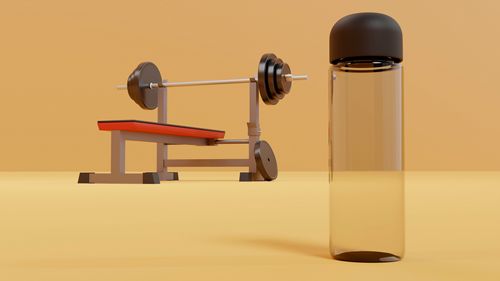Viagra, known generically as sildenafil citrate, is a medication that has revolutionized the treatment of erectile dysfunction (ED) in men. Introduced by Pfizer in 1998, it was one of the first oral drugs approved specifically for ED, becoming a household name worldwide. This medication has helped millions of men regain confidence and improve their sexual health, but understanding its mechanisms, proper usage, potential side effects, and considerations is crucial for safe and effective use.
What is Viagra?
Viagra is a prescription medication primarily used to treat erectile dysfunction. It belongs to a class of drugs called phosphodiesterase type 5 (PDE5) inhibitors. These medications enhance blood flow to the penis, facilitating an erection when sexually aroused. The active ingredient, sildenafil citrate, works by relaxing the blood vessels in the penile area, making it easier to achieve and sustain an erection.
How Does Viagra Work?
The mechanism of action of Viagra involves inhibiting PDE5, an enzyme that breaks down cyclic guanosine monophosphate (cGMP). During sexual stimulation, nitric oxide is released in the corpus cavernosum of the penis, stimulating the production of cGMP. Increased levels of cGMP cause smooth muscle relaxation in blood vessels, leading to vasodilation and increased blood flow. By blocking PDE5, sildenafil prolongs the effects of cGMP, enhancing erectile response.
Key steps in the process include:
- Sexual arousal triggers nitric oxide release.
- Nitric oxide stimulates cGMP production.
- Sildenafil inhibits PDE5, preventing cGMP breakdown.
- Enhanced cGMP levels lead to vasodilation and improved erectile function.
Usage and Dosage
Viagra is typically taken as needed, about 30 minutes to one hour before sexual activity. The standard starting dose is 50 mg, but depending on effectiveness and tolerance, it can be adjusted to 25 mg or increased to 100 mg. It is important not to exceed one dose per day.
Important guidelines for safe use include:
- Take it on an empty stomach or after a light meal for quicker absorption.
- Avoid alcohol consumption, as it can diminish the effectiveness and increase side effects.
- Follow your healthcare provider’s instructions regarding dosage and timing.
- If you experience no effect, do not increase the dose without consulting a doctor.
Potential Side Effects and Risks
While Viagra is generally safe for most men, some may experience side effects. Common adverse reactions include:
- Headache
- Flushing
- Upset stomach
- Nasally congested feeling
- Dizziness
- Visual disturbances such as blurred vision or a blue tinge
Serious but rare side effects can occur, including:
- Sudden hearing loss
- Prolonged erections (>4 hours), which require immediate medical attention to prevent tissue damage
- Cardiovascular events, especially in those with pre-existing heart conditions
Precautions and Contraindications
Before taking Viagra, disclose your complete medical history to your healthcare provider. Particular caution should be exercised if you have:
- Heart disease or recent heart attack
- Severe liver or kidney problems
- Retinitis pigmentosa or other eye disorders
- Low blood pressure or uncontrolled hypertension
- Use of nitrates or certain medications for pulmonary hypertension
Combining Viagra with nitrates can cause a dangerous drop in blood pressure and must be avoided. Always consult a healthcare professional before starting or stopping any medication.
Special Considerations
Interactions with Other Drugs
Some medications may interact negatively with Viagra. These include:

- Nitrates (used for chest pain)
- Alpha-blockers (for high blood pressure or prostate issues)
- Other PDE5 inhibitors (must not be combined)
- CYP3A4 inhibitors such as ketoconazole and ritonavir
Onset and Duration
Typically, Viagra begins working within 30-60 minutes, with peak effects around 1 hour. Its effects can last for up to 4-6 hours, providing a window for sexual activity. However, individual responses vary based on age, health status, and whether taken with food or alcohol.
Alternatives and Related Treatments
Aside from Viagra, other PDE5 inhibitors include:
- Sildenafil (generic version of Viagra)
- Tadalafil (Cialis)
- Vardenafil (Levitra, Staxyn)
- Avanafil (Stendra)
Each medication has different onset times, durations, and side effect profiles. A healthcare provider can recommend the most appropriate option based on individual health needs.
Viagra and Post-Cycle Therapy (PCT)
In some contexts, Viagra might be used off-label or in specific scenarios like post-cycle therapy (PCT) for bodybuilders or athletes recovering from steroid cycles. While not officially indicated for this purpose, some individuals find that it helps improve blood flow or counteract erectile issues caused by performance-enhancing drug use.
Viagra is commonly used to treat erectile dysfunction in men. It works by increasing blood flow to the penis to help a man get and maintain an erection. If you are looking for Viagra for post-cycle therapy, you can find it here.
Conclusion
Viagra remains one of the most effective and well-studied treatments for erectile dysfunction. When used responsibly under medical supervision, it can significantly improve sexual performance and quality of life. Understanding the correct dosage, potential side effects, interactions, and precautions is essential for safe use. Always consult a healthcare professional before starting any new medication, especially if you have underlying health conditions or are taking other drugs.


